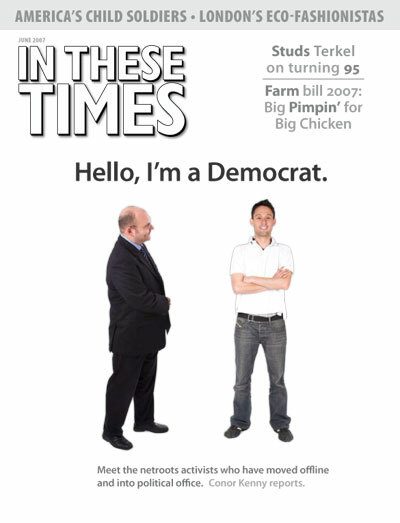Postal Rates = Free Press
Rate hike pushed by media conglomerate Time Warner threaten small and medium-circulation publications
Robert McChesney
In 1792, the United States Congress converted the free press clause in the First Amendment from an abstract principle into a living reality for Americans by providing newspapers with low postal rates. These low rates were crucial for the growth and spread of the abolitionist movement, the populist movement and progressive politics. More broadly, they have been central to development of participatory democracy in general.
Today, magazines like In These Times face an immediate threat to their financial health, and perhaps survival, due to a massive postal rate increase that will go into effect on July 15.
To the surprise of many independent publishers, in February the Postal Regulatory Commission (PRC), the body in charge of determining postal rates, rejected a rate-hike plan that was submitted by the U.S. Postal Service, the people in the business of delivering the mail for the past 215 years. This plan was widely understood to call for an approximate 12 percent increase that would have hit all publications more or less equally.
Instead the PRC adopted a revised version of an extremely complicated proposal submitted by media conglomerate Time Warner that included a number of possible discounts favoring the largest publishers. Time Warner is the largest magazine publisher in the nation. To make up for the discounts and maintain their revenue targets, some magazines will have to pay a lot more than the 12 percent increase most had budgeted for. Research by McGraw-Hill, a magazine and book publisher, suggests many publications, particularly small and medium-circulation publications, could now be looking at immediate postal rate hikes well above 20 or 25 percent – thousands to hundreds of thousands of dollars in additional costs that will strain already tight budgets.
The PRC’s Time Warner plan was approved by the Postal Board of Governors in March. Only then did many small publishers, media and public interest activists, and even members of Congress learn of this radical rate change.
Because the Postal Service is a monopoly, and because magazines must use it as their main distribution network, the postal rates have always been skewed to make it cheaper for smaller publications to launch and to survive.
The genius of the postal rate structure over the past 215 years was that it did not favor a particular viewpoint; it simply made it easier for smaller magazines. That is why the publications opposing the new postal rate hikes cross the political spectrum, and include the National Review, American Spectator, The Nation, Mother Jones and In These Times. This is a democracy issue. It is about fostering competitive media markets that benefit all Americans.
Ironically, America’s first, and arguably most brilliant, media policy is also crucial for keeping the Internet open and vibrant. Much of the public affairs material that people read on the web is generated by these print publications. If the print publications do not exist, these stories do not get written or posted online.
That is the bad news.
The good news is that a number of small publications and Free Press, a nonpartisan media reform organization, have organized a campaign to draw public attention to this crisis. Their website, www.stoppostalratehikes.com, provides links to all the relevant data and news articles and has generated 60,000 letters of protest. Rep. Danny Davis (D-Ill.), chair of the House subcommittee that oversees postal rates, has agreed to hold a congressional hearing before the potentially disastrous Time Warner plan goes into effect.
It is imperative that the truth emerges about this plan. The exact amount of its rate hikes for periodicals – still unclear, even to the Postal Service – and the implications for a free press must be understood before we take a reckless dive off a cliff on July 15. Please go to www.stoppostalratehikes.com, read the background material and consider signing the letter.








